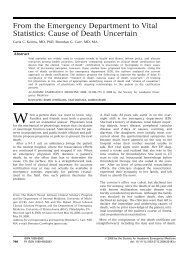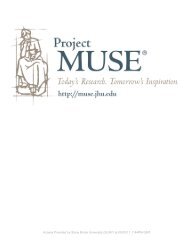Technological & Ethical Issues in Laboratory-Assisted Reproduction
Technological & Ethical Issues in Laboratory-Assisted Reproduction
Technological & Ethical Issues in Laboratory-Assisted Reproduction
You also want an ePaper? Increase the reach of your titles
YUMPU automatically turns print PDFs into web optimized ePapers that Google loves.
11<br />
the genetic gamete donors and the parents of the child. In consider<strong>in</strong>g ovum donation, another<br />
concern is the maximum age that “would be reasonable” for a woman to become pregnant. We<br />
know from recent experience that women <strong>in</strong> their late 50’s carry small but present <strong>in</strong>creased risks<br />
associated with pregnancy. One must also consider the ability of such older women and their<br />
partners to be parents of young children as they age.<br />
Thousands of embryos are currently <strong>in</strong> storage <strong>in</strong> liquid nitrogen <strong>in</strong> IVF centers<br />
throughout the United States. The majority of these will be utilized to established pregnancies.<br />
However, some frozen embryos will rema<strong>in</strong> follow<strong>in</strong>g completion of families. These embryos<br />
could potentially be utilized for scientific <strong>in</strong>vestigation or could be donated to <strong>in</strong>fertile couples to<br />
establish their own family. Most states do not have laws that address the issue of embryo<br />
donation; hence, this is currently addressed through contracts and family courts.
















